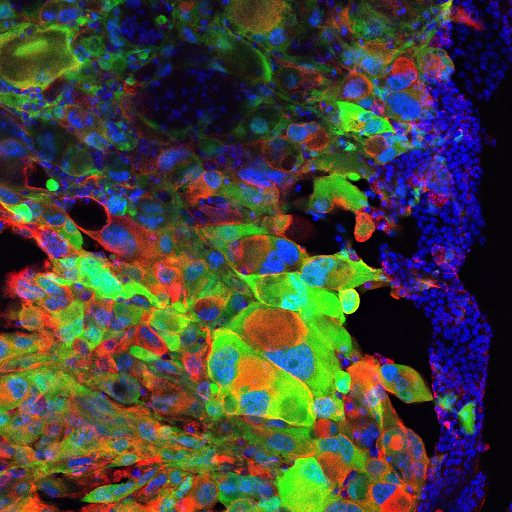Why Brain Tumors Are So Hard to Destroy

The most common and aggressive brain tumor grows by turning normal brain cells into stem cells, which can continuously replicate and regrow a tumor with only a handful of cells left behind, new research finds.
The findings help explain why the tumors, called glioblastomas, are so difficult to treat, said study researcher Inder Verma, a molecular biologist at The Salk Institute in California. Even the surgical removal of a tumor may not be able to extract every single cancerous cell, Verma told LiveScience.
Glioblastomas "reoccur because every cell that is left behind has the ability to start all over again," Verma said.
Aggressive tumors
Glioblastoma multiforme tumors make up the majority of brain tumor cases and have a very poor prognosis. According to a 2010 study in CA: A Cancer Journal for Clinicians, the average survival rate after a glioblastoma diagnosis is 14 months (though improving surgical techniques had boosted that number from 10 months in only five years prior to the study).
Verma and his colleagues were interested in finding a more accurate way of studying tumor growth. Most mice studies of cancer introduce human tumor cells into mice with no immune systems or genetically engineer mice so that every cell is cancer-prone. But that's not how tumors arise in real life, Verma said. He and his co-researchers wanted to find a way to mimic cancer's growth from a single cell to out-of-control.
Using viruses, they introduced cancer-causing genes into mice, developing a technique in which as few as 20 cancerous cells can trigger tumor growth. They then found that a mere 10 cells from one of these mouse tumors, transplanted into a healthy mouse, could lead to a whole new tumor in that mouse. [Colorful But Deadly: Images of Brain Cancer]
Sign up for the Live Science daily newsletter now
Get the world’s most fascinating discoveries delivered straight to your inbox.
"That suggested that every cell in these tumors or glioblastomas has the ability to make new glioblastomas," Verma said.
Stem cell switch
Researchers once believed that glioblastomas arose only from glial cells, the "support" cells in the brain that surround neurons. When it was discovered that the brain contains stem cells, which are capable of transforming into any sort of neural tissue, researchers figured cancer could arise from those cells, too, said study researcher Dinorah Friedmann-Morvinski, also a Salk Institute researcher.
But now, Friedmann-Morvinski, Verma and their colleagues have found they can coax even neurons into cancer cells by introducing cancer-causing genes. The neurons, which should not be able to divide and reproduce anymore, turn back into stem cells, which can continuously divide.
Researchers have successfully reprogrammed cells into stem cells in the lab, a feat that earned scientists John B. Gurdon and Shinya Yamanaka the 2012 Nobel Prize in Medicine. It was surprising, still, to find the cancer cells performing this trick, Friedmann-Morvinski told LiveScience, but there were "some hints it might be happening."
The next step, the researchers said, is to learn more about how the cells revert into stem cells and then find a way to block the out-of-control growth of these cancerous cells.
"You have to kill them in order to kill the tumor in the long run," Verma said.
The researchers report their results online today (Oct. 18) in the journal Science.
Follow Stephanie Pappas on Twitter @sipappas or LiveScience @livescience. We're also on Facebook & Google+.

Stephanie Pappas is a contributing writer for Live Science, covering topics ranging from geoscience to archaeology to the human brain and behavior. She was previously a senior writer for Live Science but is now a freelancer based in Denver, Colorado, and regularly contributes to Scientific American and The Monitor, the monthly magazine of the American Psychological Association. Stephanie received a bachelor's degree in psychology from the University of South Carolina and a graduate certificate in science communication from the University of California, Santa Cruz.









